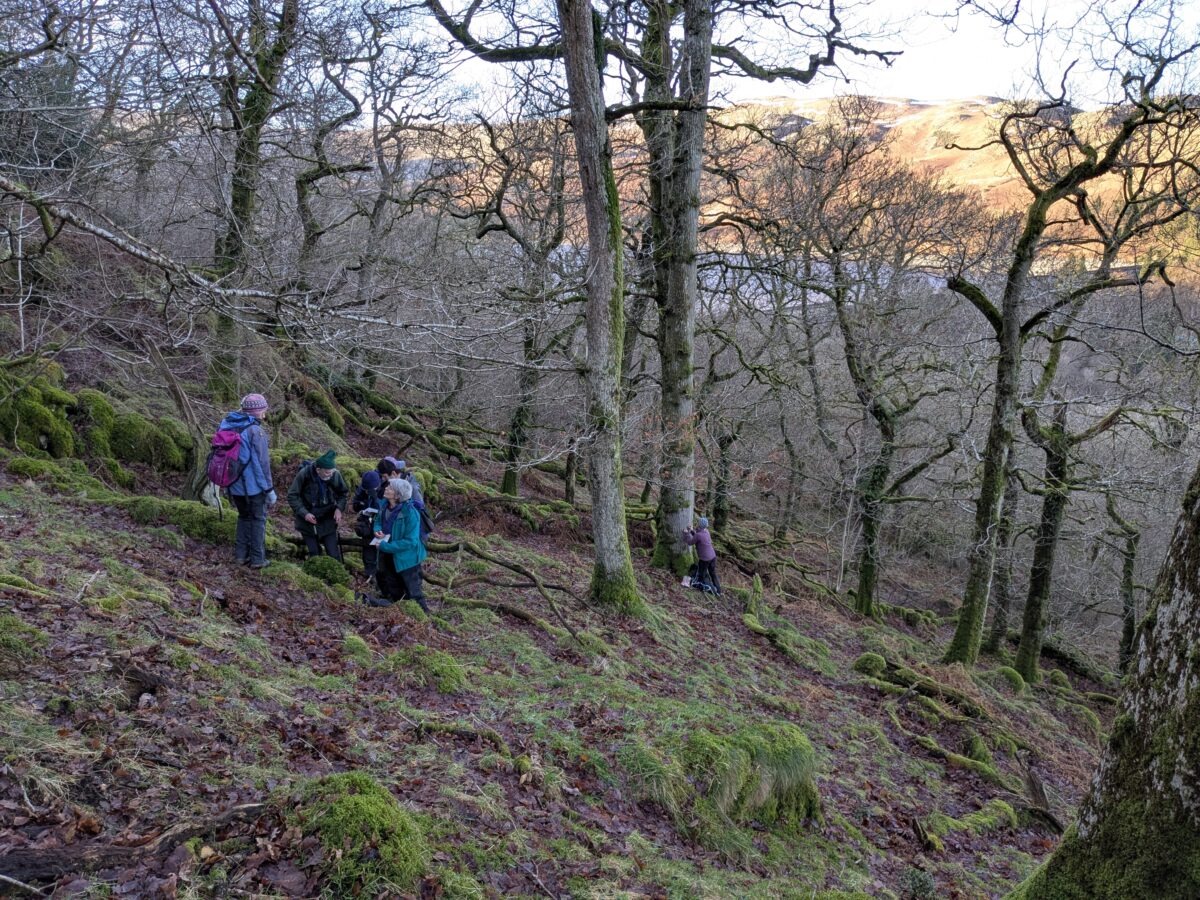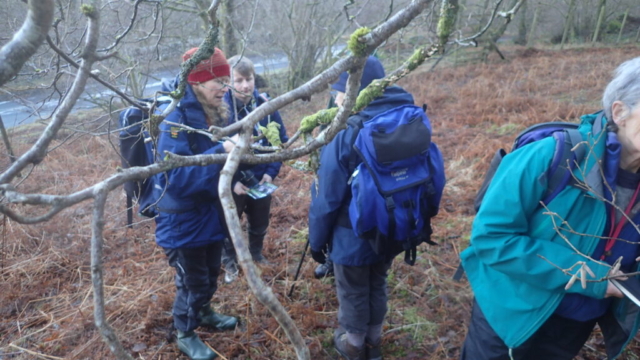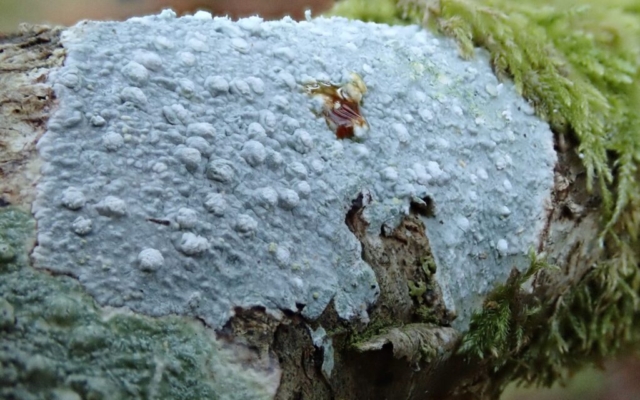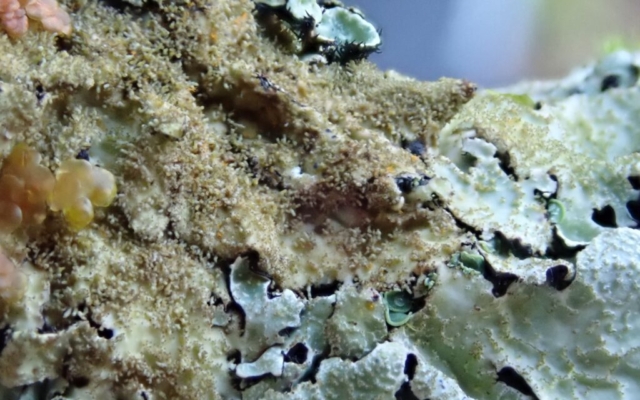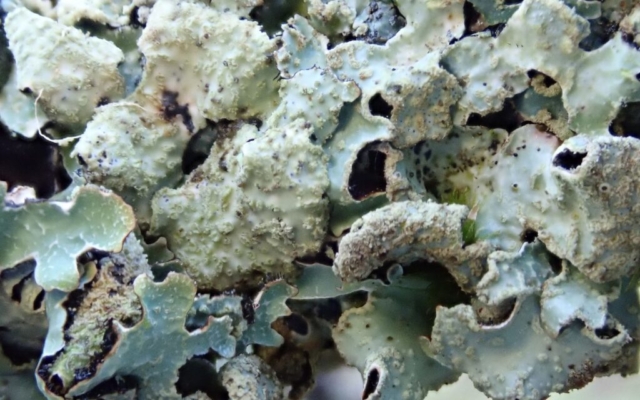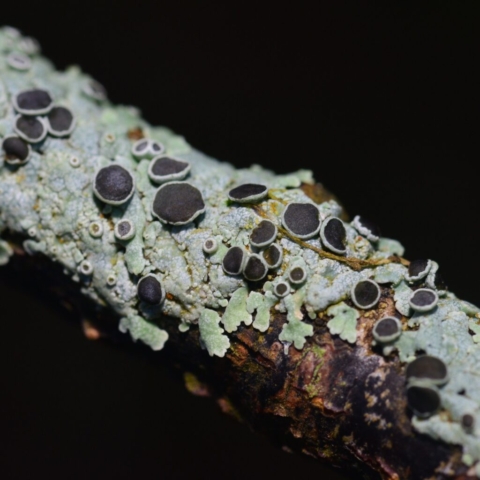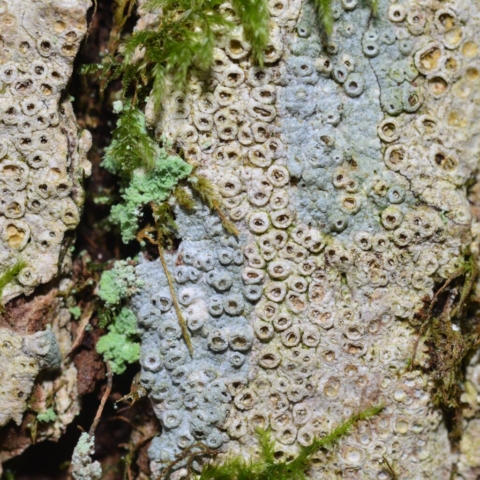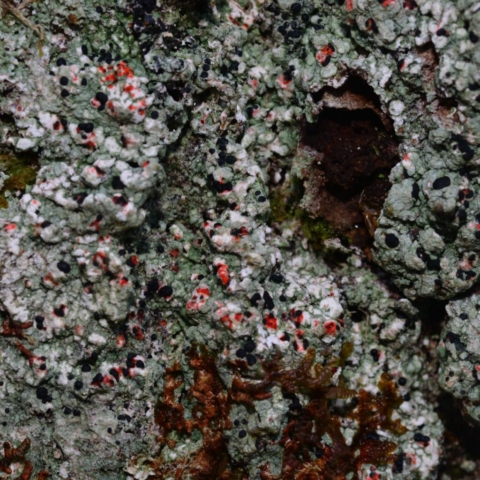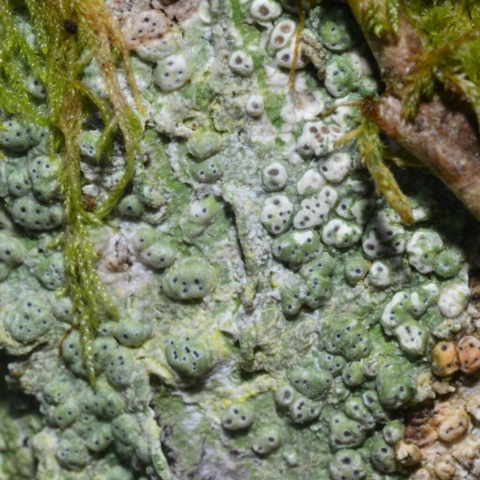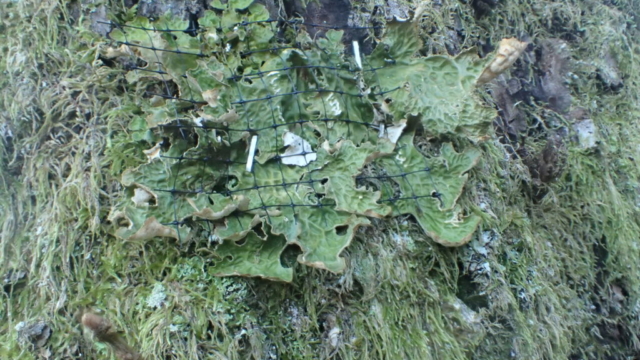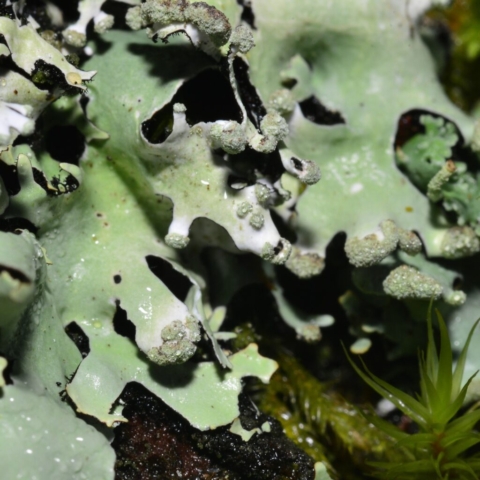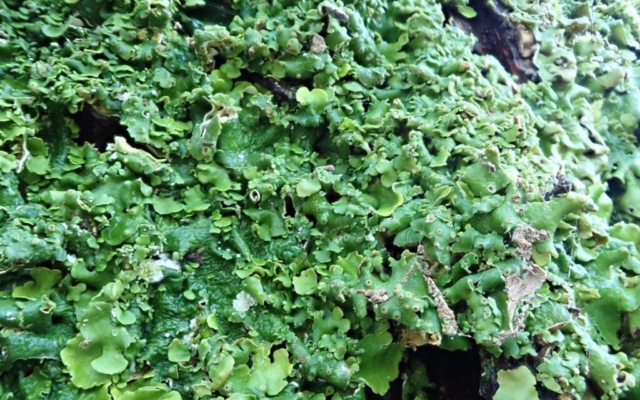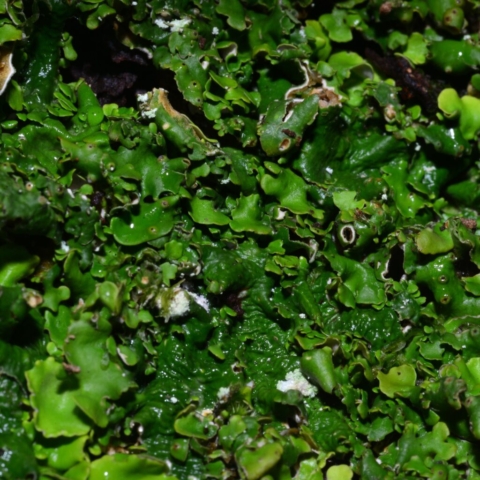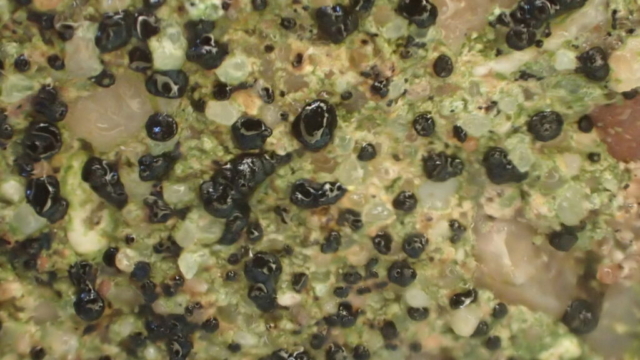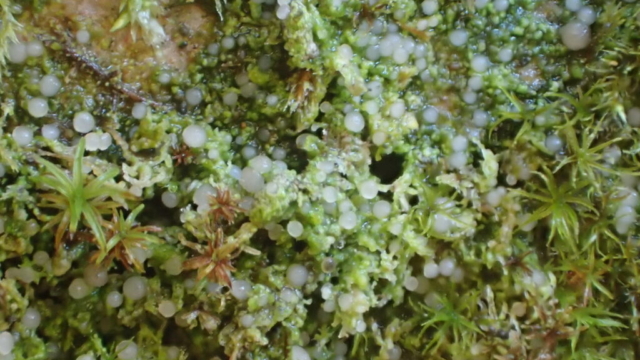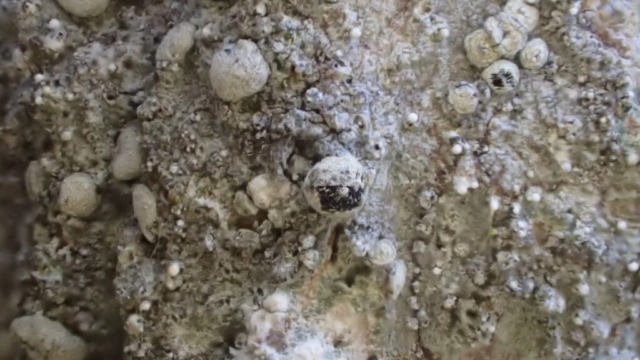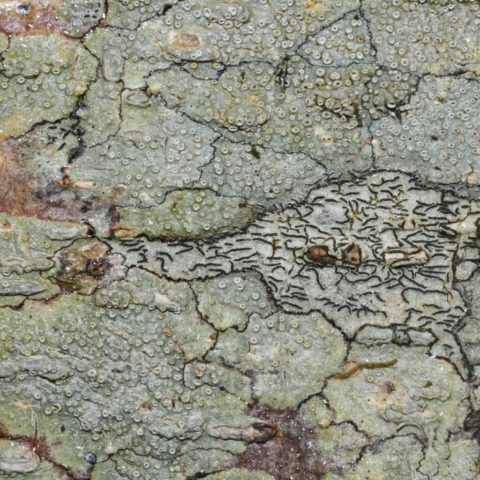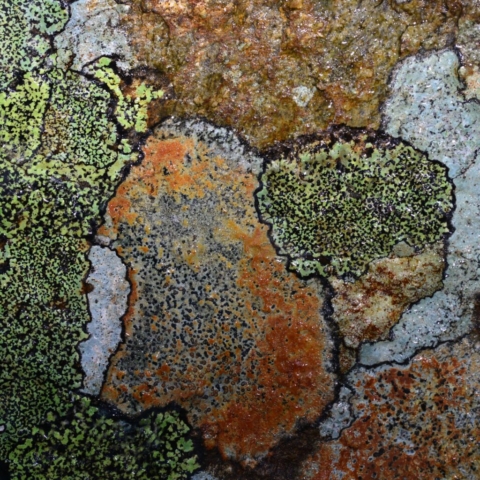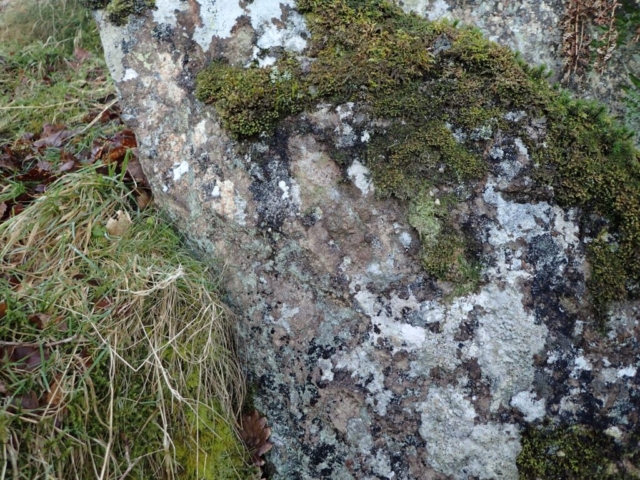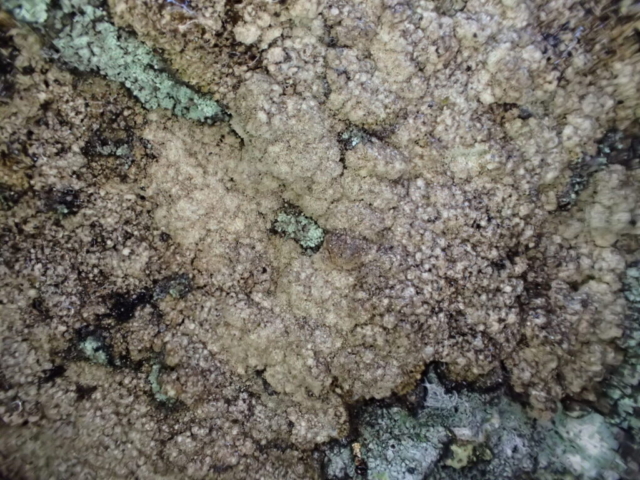The weather for once smiled on this trip. A thaw had set in making it an easy drive and it was dry, even sunny – that is on the opposite side of the valley. Our woodland was on the steep north facing slope so no sun for us at this time of year. The monad has been visited many times before and already had 178 recorded lichens. Nevertheless we were able to add a few more. I suppose it shows that there are so many micro-habitats in an ancient wood with rock outcrops that it requires many visits and many eyes to examine every one.
A very good turn out of lichenogists and bryologists meant using the lay-bys all along the road to park. We split up right at the start and didn’t meet up until the end. Both groups expressed satisfaction with their finds.
From the start we were looking at some of the more common lichens on trees: Parmelia saxatilis, Parmelia sulcata, Physcia aipolia, Lecanactis abietina, Hypotrachyna laevigata, Mycoblastus sanguinarius and Thelotrema, with Lepra multipuncta showing the sorediate apothecia and K+ red-brown.
We checked on the Lobaria pulmonaria transplants and paid homage to the Ricasolia (Lobaria) virens – why should it be on this tree and not on all the others? The tree is in a small dip so maybe the microclimate? Something had dislodged a small lobe and I happened to have a mapping pin in my pocket so picking it up from the ground I slipped it into the moss on an apparently similar nearby tree. Something to look for in 10 years time.
Maybe people concentrate too much on the delightful ancient woodland species on the trees and not enough on the just lovely long-established mosaics on the rock outcrops. One of the species new to the monad was Clauzadea monticola on a rare substrate in this natural woodland – a concrete post marking an underground electricity line! Another, Lecanora gangaleoides on an otherwise uninteresting piece of fractured rock. Both are common and readily identifiable lichens. Also on the concrete was a very wet Bilimbia sabuletorum.
Something new to me was Schismatomma umbrinum, forming thick spongy buff coloured sorediate crusts on dryish sheltered rock, amongst other silicious rock species forming mosaics. It has negative chemistry but is UV+white when scratched. This uncommon species was pointed out here by John Douglass a few years ago and has since been seen elsewhere in the vicinity. It only has a handful of records in Cumbria and a very limited national distribution.
Thanks to the organisers and participants who made it such a good day out.
Text: Peter Bisset, with additions by Chris and Caz
Photos: Chris Cant, Caz Walker, Geoffrey Haigh, Will Michaels
